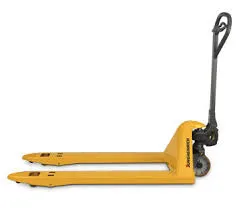


Types of Fall Protection Ensuring Safety in Workplaces
In various industries, particularly those that involve working at heights, fall protection is a critical aspect of ensuring worker safety. Falls are one of the leading causes of workplace injuries and fatalities, making it essential for employers to implement appropriate fall protection measures. This article explores the different types of fall protection equipment and strategies used to safeguard workers in high-risk environments.
1. Personal Fall Arrest Systems (PFAS)
A Personal Fall Arrest System is one of the most common forms of fall protection. PFAS typically consists of three main components a full-body harness, a lanyard, and an anchorage point. The full-body harness is designed to distribute the impact forces over the body in the event of a fall, reducing the risk of injury. The lanyard connects the harness to an anchorage point, which is a secure location designed to withstand the forces of a fall. PFAS is particularly useful in situations involving ladders, scaffolding, or roof work where workers are at significant heights.
2. Guardrails
Guardrails are permanent or temporary barriers erected around the edges of elevated work surfaces. These systems are designed to prevent workers from falling off edges, such as roofs or scaffolds. Typically constructed from materials like metal or wood, guardrails must meet specific height and strength standards to be effective. In addition to their protective function, guardrails often provide a visible reminder to workers about the risks of working at heights, promoting safer behaviors.
3. Safety Nets
Safety nets are another form of fall protection that can be used in various construction works. These nets are installed below the work area to catch workers if they fall, minimizing injury from impact. Safety nets can be particularly effective in large-scale construction projects where multiple workers are operating at heights. They are designed to stretch and absorb the force of a fall, distributing the impact over a larger area to reduce the risk of serious injury.

4. Elevating Work Platforms (EWPs)
Elevating Work Platforms, commonly referred to as cherry pickers or scissor lifts, are mechanized equipment that provide access to high areas without exposing workers to fall hazards. These platforms elevate workers safely and securely while allowing them to perform tasks at height. Proper training and adherence to safety protocols when using EWPs are critical, as misuse can still lead to falls or accidents.
5. Fall Restraint Systems
Unlike fall arrest systems that are designed to catch a falling worker, fall restraint systems prevent a worker from reaching an unprotected edge in the first place. These systems utilize anchorage points and connecting devices to keep workers securely anchored away from potential fall hazards. Such systems are essential in scenarios where falls are likely, yet workers must remain at heights to perform their duties.
6. Training and Education
Regardless of the type of fall protection equipment in use, proper training and education are paramount. Workers must be trained to recognize fall hazards, understand the fall protection systems in place, and know how to use the equipment effectively. Regular safety meetings and drills can help reinforce safe practices and ensure that workers remain vigilant about their surroundings.
Conclusion
In concluding, understanding and implementing the various types of fall protection is crucial for maintaining a safe working environment, particularly in industries that involve heights. From Personal Fall Arrest Systems to guardrails, safety nets, and training programs, there are multitude strategies that can be employed to mitigate the risks associated with falls. Employers must prioritize safety by investing in the right equipment and providing comprehensive training to their workforce. By doing so, they not only ensure compliance with safety regulations but also foster a culture of safety that protects their most valuable asset—their workers.



